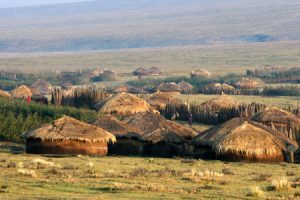Global Stratification and Inequality
- Define global stratification
- Describe different sociological models for understanding global stratification
- Understand how studies of global stratification identify worldwide inequalities


Global stratification compares the wealth, economic stability, status, and power of countries across the world. Global stratification highlights worldwide patterns of social inequality.
In the nineteenth century, the Industrial Revolution created unprecedented wealth in Western Europe and North America. Due to mechanical inventions and new means of production, people began working in factories—not only men, but women and children as well. By the late nineteenth and early twentieth centuries, industrial technology had gradually raised the standard of living for many people in the United States and Europe. The Industrial Revolution also saw the rise of vast inequalities between countries that were industrialized and those that were not. As some nations embraced technology and saw increased wealth and goods, others maintained their ways; as the gap widened, the non-industrialized nations fell further behind. Some social researchers, such as Walt Rostow, suggest that the disparity also resulted from power differences. Applying a conflict theory perspective, he asserts that industrializing nations took advantage of the resources of traditional nations. As industrialized nations became rich, other nations became poor (Rostow 1960).
Sociologists studying global stratification analyze economic comparisons between nations. Income, purchasing power, and wealth are used to calculate global stratification. Global stratification also compares the quality of life that a country’s population can have.
Poverty levels have been shown to vary greatly. The poor in wealthy countries like the United States or Europe are much better off than the poor in less-industrialized countries such as Mali or India. In 2002, the UN implemented the Millennium Project, an attempt to cut poverty worldwide by the year 2015. To reach the project’s goal, planners in 2006 estimated that industrialized nations must set aside 0.7 percent of their gross national income—the total value of the nation’s good and service, plus or minus income received from and sent to other nations—to aid in developing countries (Landler and Sanger, 2009; Millennium Project 2006).
Models of Global Stratification

Various models of global stratification all have one thing in common: they rank countries according to their relative economic status, or gross national product (GNP). Traditional models, now considered outdated, used labels to describe the stratification of the different areas of the world. Simply put, they were named “first world, “second world,” and “third world.” First and second world described industrialized nations, while third world referred to “undeveloped” countries (Henslin 2004). When researching existing historical sources, you may still encounter these terms, and even today people still refer to some nations as the “third world.”
Another model separates countries into two groups: more developed and less developed. More-developed nations have higher wealth, such as Canada, Japan, and Australia. Less-developed nations have less wealth to distribute among higher populations, including many countries in central Africa, South America, and some island nations.
Yet another system of global classification defines countries based on the per capita gross domestic product (GDP), a country’s average national wealth per person. The GDP is calculated (usually annually) one of two ways: by totaling either the income of all citizens or the value of all goods and services produced in the country during the year. It also includes government spending. Because the GDP indicates a country’s productivity and performance, comparing GDP rates helps establish a country’s economic health in relation to other countries.
These figures also establish a country’s standard of living. According to this analysis, a GDP standard of a middle-income nation represents a global average. In low-income countries, most people are poor relative to people in other countries. Citizens have little access to amenities such as electricity, plumbing, and clean water. People in low-income countries are not guaranteed education, and many are illiterate. The life expectancy of citizens is lower than in high-income countries.
Summary
Global stratification compares the wealth, economic stability, status, and power of countries as a whole. By comparing income and productivity between nations, researchers can better identify global inequalities.
Short Answer
Why is it important to understand and be aware of global stratification? Make a list of specific issues that are related to global stratification. For inspiration, turn on a news channel or read the newspaper. Next, choose a topic from your list, and look at it more closely. Who is affected by this issue? How is the issue specifically related to global stratification?
Compare a family that lives in a grass hut in Ethiopia to an American family living in a trailer home in the United States. Assuming both exist at or below the poverty levels established by their country, how are the families’ lifestyles and economic situations similar and how are they different?
References
Millennium Project. 2006. “Expanding the financial envelope to achieve the Goals.” Millennium Project Official Website. Retrieved January 9, 2012 (http://www.unmillenniumproject.org/reports/costs_benefits2.htm).
Nationsonline.org. “Countries by Gross National Income (GNI).” Retrieved January 9, 2012 (http://www.nationsonline.org/oneworld/GNI_PPP_of_countries.htm).
PRB.org. “GNI PPP Per Capita (US$).” PRB 2011 World Population Data Sheet. 2011 Population Reference Bureau. Retrieved January 10, 2012 (http://www.prb.org/DataFinder/Topic/Rankings.aspx?ind=61).
Rostow, Walt W. 1960. The Stages of Economic Growth: A Non-Communist Manifesto. Cambridge, MA: Cambridge University Press.
Landler, Mark, and David E. Sanger. 2009. “World Leaders Pledge $1.1 Trillion for Crisis.” New York Times, April 3. Retrieved January 9, 2012 (http://www.nytimes.com/2009/04/03/world/europe/03summit.html).
a comparison of the wealth, economic stability, status, and power of countries as a whole

